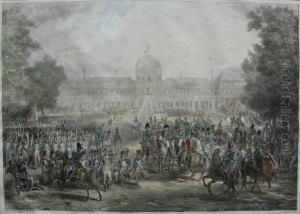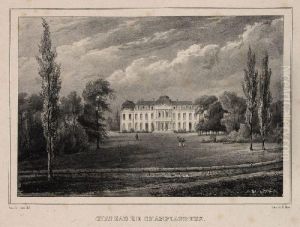Charles Motte Paintings
Charles Motte, born in 1785 in France, was a pivotal figure in the 19th-century French lithography scene, contributing significantly to the development and popularization of lithography in France and across Europe. Though not as widely recognized as some of his contemporaries, Motte played a crucial role in the artistic and technical evolution of lithographic printing, which became a vital medium for artistic expression and commercial reproduction during his lifetime.
Motte's career spanned a period of great social, political, and technological change in France, from the aftermath of the French Revolution through the Napoleonic era and into the Restoration period. He was not only a skilled lithographer but also a capable publisher and entrepreneur, navigating the shifting tides of French society and culture with acumen. His workshop in Paris became a hub for artists and writers, facilitating the spread of lithography as an accessible and versatile form of art.
One of Motte's significant contributions was his ability to collaborate with prominent artists of his time, including producing works with and for figures like Eugène Delacroix and Jean-Antoine Gros. This collaboration extended the reach of lithography into various artistic realms, including political caricature, landscape, and portraiture, demonstrating the medium's versatility and appeal. Moreover, Motte was instrumental in the technical advancement of lithography, experimenting with color lithography and striving to improve the quality and durability of lithographic stones.
Despite his death in 1836, Charles Motte's legacy lived on through his contributions to the art of lithography. His efforts not only advanced the technical aspects of the medium but also solidified its place in the art world as a legitimate and respected form of artistic expression. Today, Motte is celebrated for his pioneering work and his role in shaping the trajectory of 19th-century French art.


